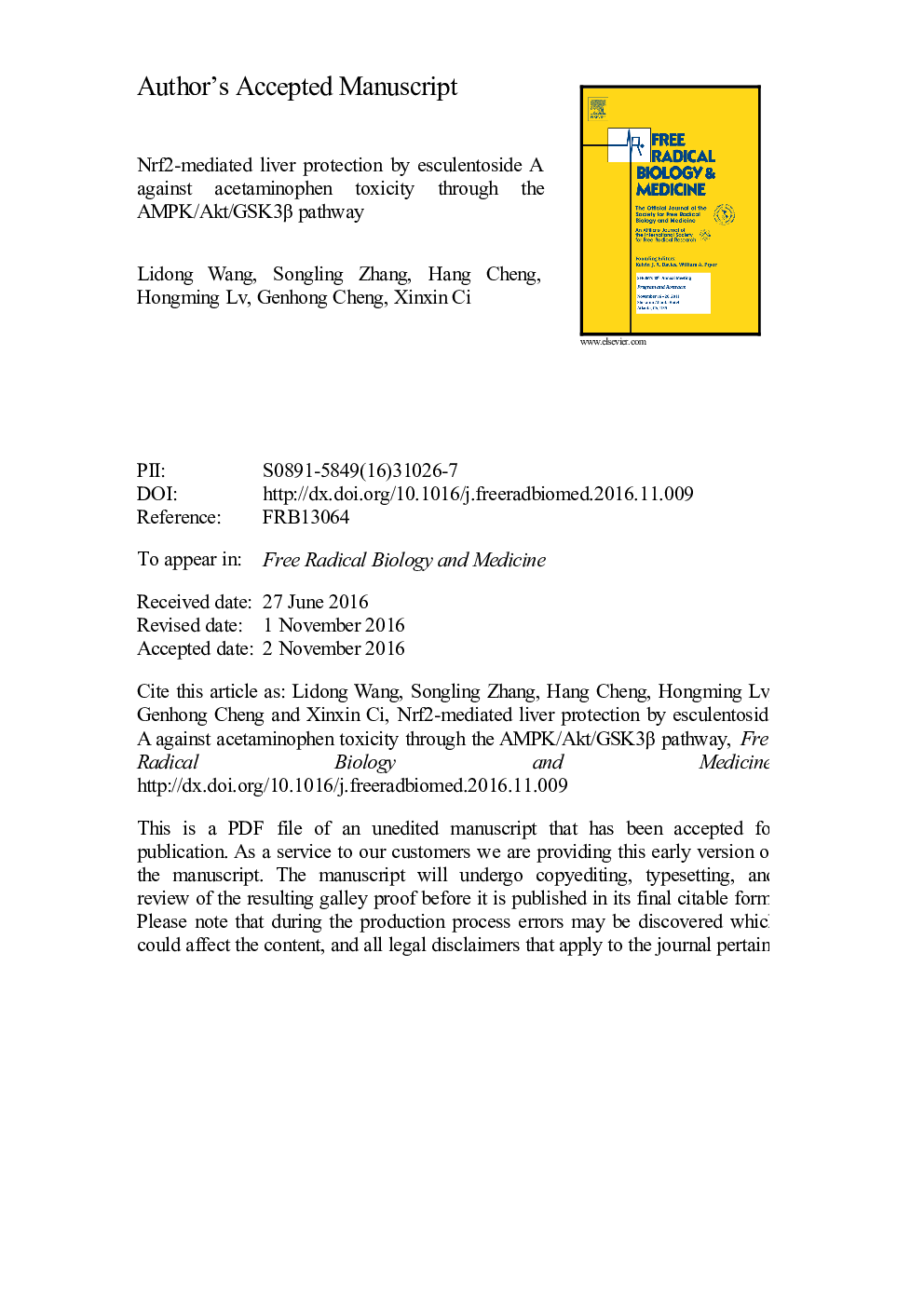| Article ID | Journal | Published Year | Pages | File Type |
|---|---|---|---|---|
| 5501866 | Free Radical Biology and Medicine | 2016 | 29 Pages |
Abstract
Acetaminophen (APAP) overdose accounts for the majority of acute liver failure cases, and oxidative stress plays a key role in its toxic effects. Esculentoside A (EsA) has anti-oxidant activities, but its therapeutic potential for APAP hepatotoxicity remains unknown. This study aimed to assess the protective effects and mechanism of EsA against APAP-induced hepatotoxicity in vitro and in vivo. In vitro, EsA treatment inhibited APAP- or H2O2-induced cytotoxicity, H2O2 and O2- production, glutathione (GSH) depletion and apoptosis dependent on nuclear factor erythroid-2-related factor 2 (Nrf2) activation in HepG2 cells. Moreover, EsA significantly increased the phosphorylation of AMP-activated protein kinase (AMPK) and serine/threonine kinase (Akt), as well as glycogen synthase kinase 3 beta (GSK-3β) inhibitory phosphorylation at Ser9. Furthermore, an AMPK inhibitor (compound c) abolished the effects of EsA on AKT phosphorylation, GSK-3β inactivation, Nrf2 nuclear translocation and cytoprotection. With regard to APAP-induced acute liver injury, EsA attenuated the APAP-stimulated increases in the serum ALT and AST levels, as well as centrilobular necrosis and GSH depletion in the mice. In addition, it decreased the GSSG level, GSSG-to-GSH ratio, and the phosphorylation and mitochondrial translocation of c-Jun N-terminal kinase (JNK). Further, the protective potential of EsA against mitochondrial dysfunction was exhibited not only by inhibiting Bax mitochondrial translocation and the release of mitochondrial inter-membrane proteins, such as apoptosis-inducing factor (AIF), but also by activating Nrf2/HO-1. Collectively, our findings suggest that EsA has protective potential against APAP toxicity by potentiating the Nrf2-regulated survival mechanism through the AMPK/Akt/GSK3β pathway.
Related Topics
Life Sciences
Biochemistry, Genetics and Molecular Biology
Ageing
Authors
Lidong Wang, Songling Zhang, Hang Cheng, Hongming Lv, Genhong Cheng, Xinxin Ci,
